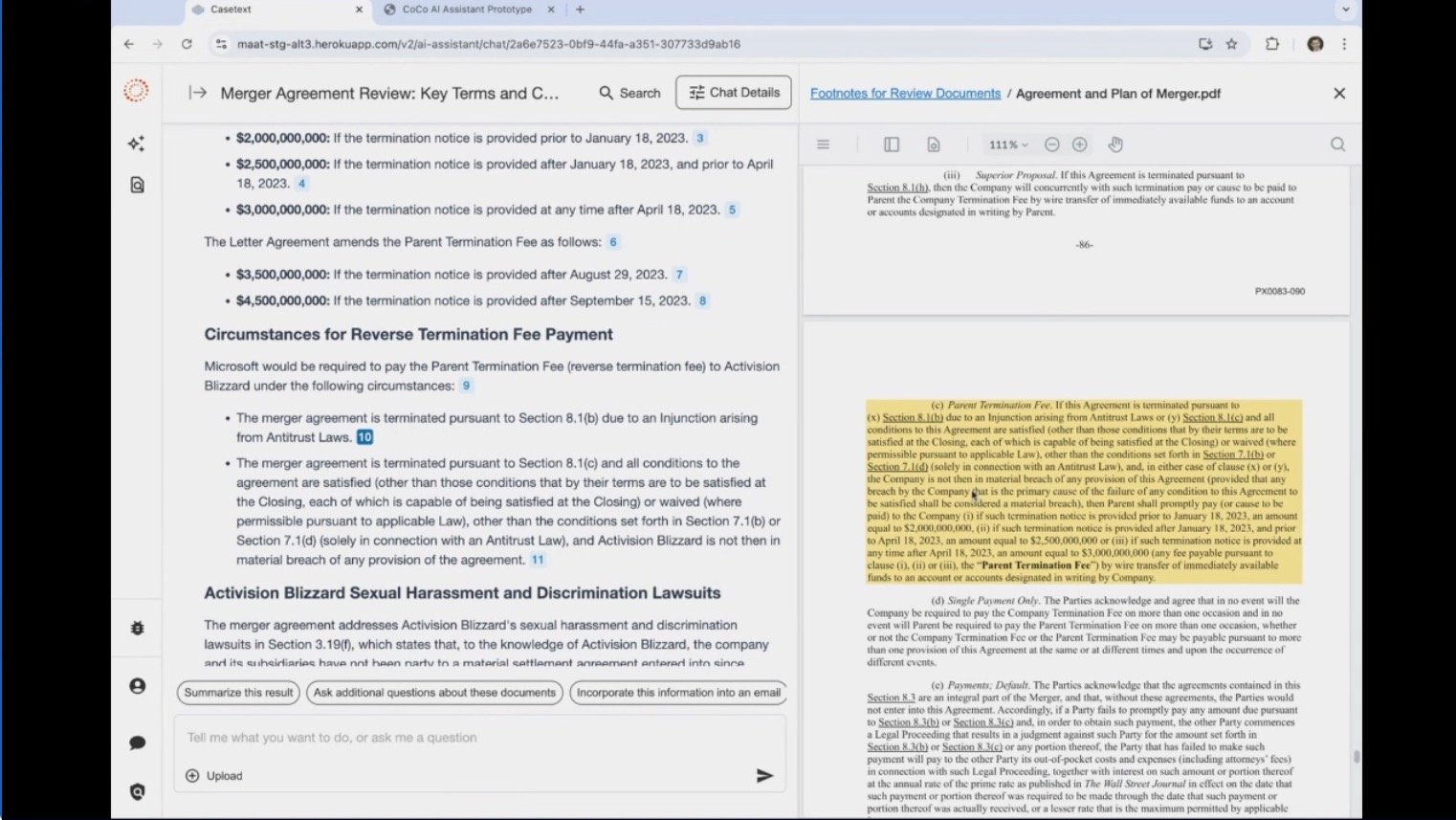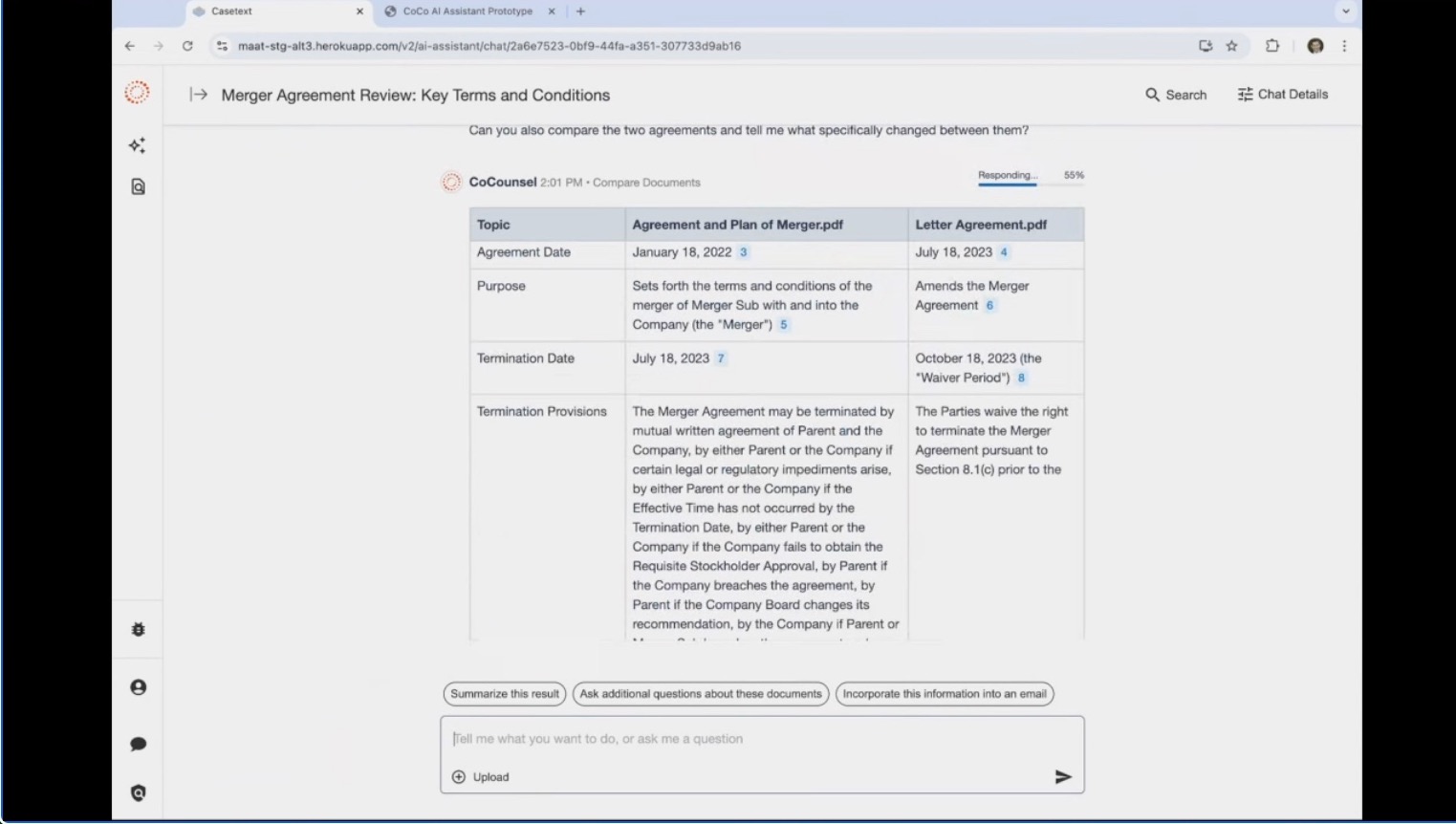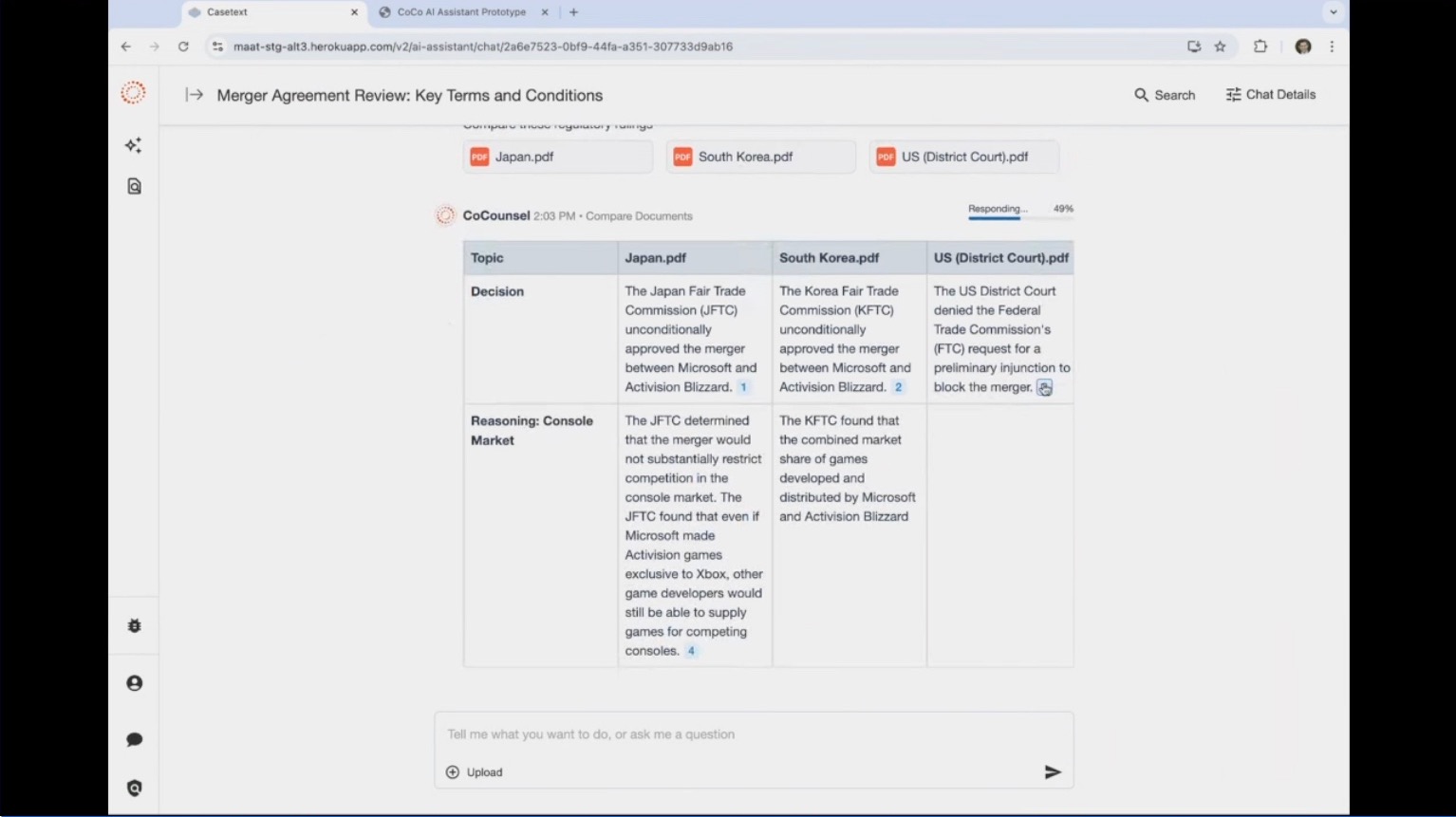 Just four years ago, lawyers were somewhat awestruck when they tried out Casetext’s AI-powered legal research tool for the first time.
Just four years ago, lawyers were somewhat awestruck when they tried out Casetext’s AI-powered legal research tool for the first time.
The product, dubbed “Parallel Search,” demonstrated a groundbreaking ability: conducting research based on the meaning of a phrase, as opposed to finding an exact keyword, which had been the process for decades.
But as impressive as this advancement was, few could predict just how quickly artificial intelligence technology in the legal industry would continue to develop and grow in the coming years.
This progress hit a high point with the launch of the first version of CoCounsel by Casetext in 2023 — and the tool’s subsequent addition to the Thomson Reuters suite of technology products.
CoCounsel aims to function as an AI legal assistant — you can talk to it as you would a colleague, give it directions, and ask it to complete tasks, which it will do with superhuman capabilities.
And as generative AI technology has continuously improved, so have CoCounsel’s offerings.
Thomson Reuters recently launched CoCounsel 2.0, which contains several big upgrades made possible by advances in the underlying tech.
CoCounsel 2.0 is three times faster than the previous version. It has new features that make it even more intuitive, and it delivers results that are more nuanced and thorough.
In response to users’ requests, the new version of CoCounsel integrates directly with your document management system, and it can now compare several documents and provide detailed analysis of how they differ.
Here, we’re sharing a tour of the latest version of CoCounsel, guided by Jake Heller, who co-founded Casetext and is currently CoCounsel’s head of product.
Getting Started
The upgrades in CoCounsel 2.0 are evident from when you first log in.
There is some new Thomson Reuters stylization, but, more importantly, CoCounsel 2.0 is now fully supported on Thomson Reuters infrastructure.
This means your login process is now seamless. CoCounsel also now integrates directly with Thomson Reuters’ Westlaw and Practical Law, as well as with Microsoft 365.
Additionally, you can now bring in files for CoCounsel to analyze through your document management system.
CoCounsel users previously had to take a document out of a DMS, save it to their hard drive, and then upload it into CoCounsel. Now, CoCounsel syncs directly with systems including NetDocuments, SharePoint, and iManage.

New Superpowers
For an example task, CoCounsel was populated with a 100-page proposed merger agreement, along with a letter agreement that modifies the original document, based on Microsoft’s acquisition of Activision Blizzard.
CoCounsel was asked several complex questions about the two documents. Without this technology, manually determining these answers would likely occupy an associate for the better part of a day.

CoCounsel was able to answer these questions in less than a minute, providing detailed analysis that shows its work.

This exercise shows off many of the advances in artificial intelligence that are reflected in CoCounsel 2.0.
First, the new CoCounsel is simply much faster than the previous version, meaning this search happens in about a minute, as opposed to a few minutes.
The advances are far more substantive, however. As AI becomes faster, CoCounsel can consider larger datasets at one time and provide more intelligent analysis.
Heller notes that in the prior version of CoCounsel, the underlying AI would process a document in four- or five-page pieces and then compile its answers based on ongoing notes.
Now, the AI can read 5,000 pages at a time, and therefore it can fashion more intelligent answers and insights.
With these advances, AI can now analyze the impact of amendments to documents, or find patterns that imply the use of code words in eDiscovery data, or spot inconsistencies in deposition testimony.
Even with these advances, though, it’s critical to keep the human in the loop to verify the work of any AI tool. CoCounsel 2.0 takes big steps in that direction as well.
Every answer it provides is accompanied by a footnote number. A click on the number takes the user directly to the relevant portion of the underlying document, allowing the human user to review the information directly.

Comparing Documents
If you’re looking at a proposed agreement and then a document amending it, or trying to compare regulatory rulings across jurisdictions, listing out differences in these documents can be a time-consuming task.
The new version of CoCounsel addresses this problem with the same intuitive and user-friendly approach found elsewhere in the product.
CoCounsel 2.0 allows users to simply upload multiple documents, and the tool will generate a detailed table comparing the documents on numerous data points, with easy links to the source included.

The use cases abound. Litigators, for example, may want to compare decisions across jurisdictions and point out similarities and differences.
Here’s an example of how it shows rulings from Korea, Japan, and the U.S. — with the source documents uploaded in Korean, Japanese, and English, respectively.

The CoCounsel Difference
It’s clear that the CoCounsel legal assistant is a powerful and transformative technology, and the upgrades in the latest version will further ease the rote tasks that bog down legal work.
Curious about learning more? You can check out the product here.

![how-thomson-reuters-supercharged-cocounsel-with-gen-ai-advances-[sponsored]](https://lawofnew.com/wp-content/uploads/2024/10/11907-how-thomson-reuters-supercharged-cocounsel-with-gen-ai-advances-sponsored.jpg)